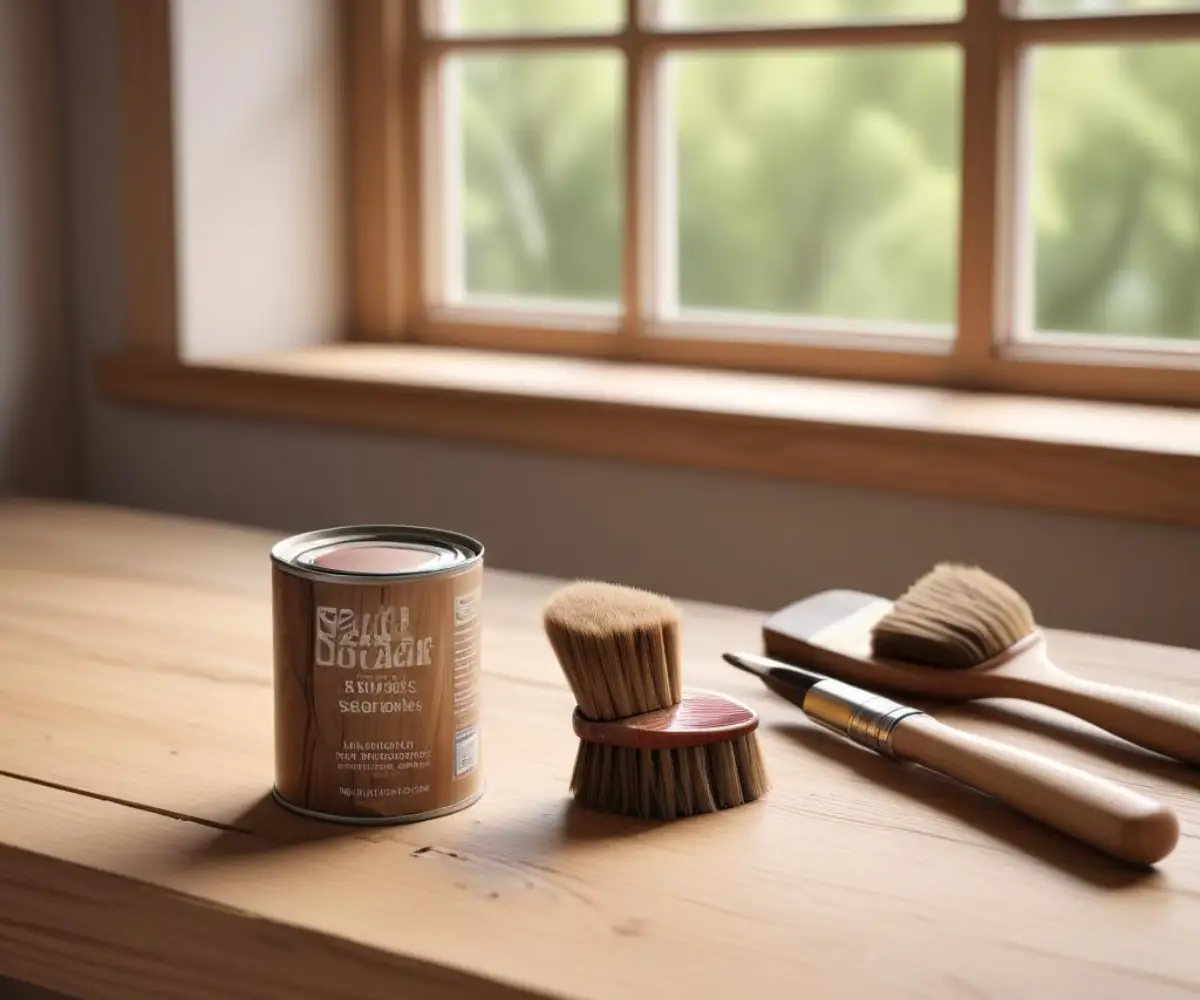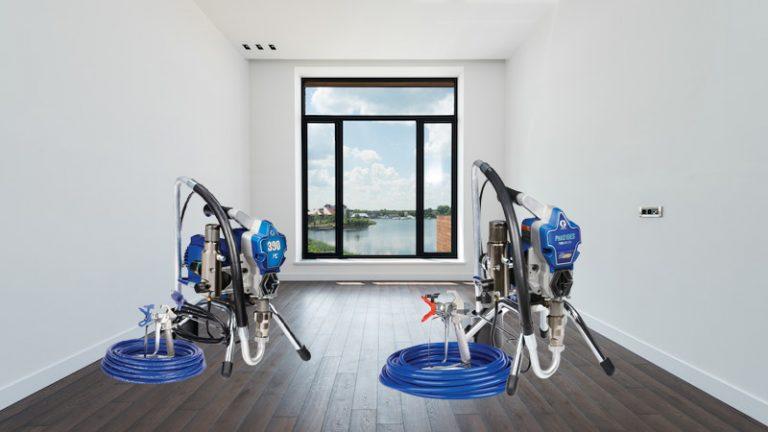Indoor Wood Staining Dangers: Is Your DIY Project Harming Your Home?
There’s immense satisfaction in transforming a piece of wooden furniture or reviving tired floors with a fresh coat of stain. The allure of working indoors—safe from unpredictable weather and pesky insects—can seem like the perfect setup for a weekend DIY project. But this convenience hides a significant and often underestimated threat to your health and home safety.
Many homeowners begin these projects with the best intentions, only to find themselves dealing with dizziness, persistent headaches, or worse. The beautiful finish you envisioned can come at a high cost if the proper precautions are not taken. Understanding the invisible dangers lurking in that can of wood stain is the first step toward a project that is both beautiful and safe.
You'll Learn About
Unmasking the Culprits: What’s Really in Wood Stain?
The rich color and durable finish of many wood stains, particularly oil-based varieties, are due to a complex mixture of chemicals. While these ingredients achieve the desired aesthetic, they also release harmful substances into your home’s air. The most significant of these are Volatile Organic Compounds, or VOCs.
These compounds are “volatile” because they easily evaporate at room temperature, turning from a liquid into a gas. When you open a can of stain and smell that characteristic chemical odor, you are inhaling VOCs. These fumes don’t just disappear when the smell fades; they can linger in your indoor air for days, weeks, or even longer as the stain cures.
The Science of VOCs: From Headaches to Long-Term Harm
Common VOCs found in wood stains include chemicals like toluene, xylene, benzene, and petroleum distillates. Exposure to these substances can cause a range of immediate health effects. You might experience dizziness, nausea, irritation of the eyes, nose, and throat, or severe headaches. For individuals with asthma or other respiratory conditions, these fumes can trigger serious symptoms.
However, the danger isn’t limited to short-term discomfort. Prolonged or repeated exposure to high levels of VOCs has been linked to more severe health problems, including damage to the liver, kidneys, and central nervous system. It’s a sobering thought that a simple home improvement project could have lasting consequences if managed improperly.
Beyond the primary VOCs, other toxic ingredients can be present, such as fungicides to prevent mold growth and metallic driers to speed up the curing process. These components also contribute to the chemical cocktail off-gassing into your home, compounding the potential health risks.
The Overlooked Fire Hazard Hiding in Plain Sight
While the health risks associated with fumes are significant, an even more immediate and catastrophic danger exists: fire. The solvents in oil-based stains are highly flammable, but the most deceptive threat comes from a phenomenon known as spontaneous combustion.
It sounds like something out of a science fiction movie, but it’s a very real and documented cause of devastating house fires. The danger isn’t from the can of stain itself, but from the rags and cloths used to apply it.
Spontaneous Combustion: The Oily Rag Phenomenon
Here’s how it happens: as an oil-based stain dries, it undergoes an exothermic chemical reaction called oxidation, which generates heat. When you apply stain with a rag and then discard it, this process continues. If you bunch up the rag and toss it in a pile or a trash can, the heat it generates becomes trapped.
The cloth material of the rag provides insulation, allowing the temperature in the center of the pile to rise steadily. With enough trapped heat and access to oxygen, the rag’s temperature can climb to its ignition point. At this critical moment, the pile of rags can burst into flames without any external spark or flame source. This can happen hours, or even days, after you’ve finished your project.

This risk is not theoretical. Countless homes have been damaged or destroyed by fires that started in a garage or basement from improperly discarded staining materials. It’s a silent and deadly hazard that every DIY enthusiast must take seriously.
Your Step-by-Step Guide to Staining Wood Safely Indoors
Knowing the dangers is half the battle; the other half is implementing a rigorous safety plan. It is possible to stain wood indoors, but it requires a methodical and uncompromising approach to safety. Follow these essential steps to protect yourself and your home.
These protocols are not suggestions; they are necessities for any indoor staining project. Cutting corners on safety can lead to irreversible consequences for your health and property.
Step 1: Ventilation is Absolutely Non-Negotiable
The single most important factor for safe indoor staining is ventilation. Your goal is to create a constant and powerful flow of fresh air that moves the hazardous fumes out of your workspace and away from your living areas. Simply cracking a window is not enough.
For optimal “cross-ventilation,” open windows on opposite sides of the room. Place a box fan in one window, facing out, to actively pull the contaminated air from the room. Use another fan near the opposite window or door to push fresh air in, creating a continuous cycle of air exchange. This setup is crucial for minimizing the concentration of VOCs in the air you breathe.
Step 2: Gear Up With the Right Personal Protective Equipment (PPE)
Your body needs a physical barrier against the chemicals in wood stain. Standard paper dust masks are completely ineffective against chemical fumes. You must use a NIOSH-approved respirator with organic vapor (OV) cartridges to filter out the harmful VOCs.
In addition to respiratory protection, wear chemical-resistant gloves (nitrile or neoprene, not latex) to prevent the stain from being absorbed through your skin. Safety goggles are also essential to protect your eyes from accidental splashes. Proper PPE is your first and most direct line of defense.
Step 3: Choose Your Stain Wisely
The type of stain you choose has a massive impact on the safety of your project. While oil-based stains have traditionally been popular for their durability, modern water-based and low-VOC alternatives offer a much safer profile for indoor use. These formulations are engineered to release far fewer harmful chemicals and have a much milder odor.
Before you buy, carefully read the product labels and Safety Data Sheets (SDS) to understand the VOC content and specific safety requirements. While some complex projects may still require specific finishes, you may discover that a safer, water-based product like a gel stain is perfectly suitable. Sometimes, the safest solution involves preventing the problem from the start, such as addressing any unusual residues like sticky substances emerging from wood before you even consider staining.
| Stain Type | Primary Solvent | VOC Level | Drying Time | Best For |
|---|---|---|---|---|
| Oil-Based | Petroleum Distillates | High | Slow (6-24 hours) | Large surfaces (floors, tables), deep penetration, high durability. |
| Water-Based | Water | Low to Zero | Fast (1-3 hours) | Indoor furniture, cabinets, projects requiring fast completion, safer for indoor air. |
| Gel Stain | Oil or Water | Medium to High | Slow (8-24 hours) | Vertical surfaces (doors, trim), preventing blotching on porous woods like pine. |
Advanced Safety Protocols and Lingering Dangers
Even after the last coat is applied and your tools are cleaned, the danger has not completely passed. The period after the stain is dry to the touch is critical, as is ensuring the byproducts of your work are handled correctly.
Attention to these final details ensures that your project is truly complete and your home environment is safe for your family. Ignoring these post-application risks is a common and dangerous mistake. Also, use proper nails.
The Curing Process: When is it Truly Safe?
A critical distinction to understand is the difference between “drying” and “curing.” A stain may feel dry to the touch in a matter of hours, but the chemical hardening and off-gassing process—known as curing—can continue for days or even weeks. During this time, the stain is still releasing VOCs into the air.
Continue to ventilate the room for as long as possible after the project is complete, ideally for at least 72 hours. Keep children, pets, and individuals with respiratory sensitivities out of the area until the chemical odor has completely dissipated. The lingering smell is a direct indicator that the curing process is still underway.
The Final, Crucial Step: Safe Rag Disposal
Never underestimate the danger of spontaneous combustion. To safely dispose of oil-based stain rags, you must prevent the buildup of heat. Do not bunch them up or throw them directly into the trash.
The safest method is to lay each rag out flat on a non-flammable surface, like a concrete driveway or garage floor, ensuring they are not overlapping. Allow them to dry completely until they are stiff and crunchy, which can take 24 to 48 hours. Once fully dry and cured, they are no longer a fire risk and can be disposed of in your regular trash. Alternatively, you can submerge the wet rags in a metal can filled with water and seal it with a tight-fitting lid before taking it to a hazardous waste disposal facility.
Also Read: Asphalt Impregnated Plywood: The Hidden Danger Lurking in Your Walls?
The Final Coat: A Beautiful Finish Without Compromise
Achieving a professional-quality wood finish indoors is an attainable goal, but it demands respect for the materials and processes involved. The primary dangers—toxic VOCs and the risk of spontaneous combustion—are severe but entirely manageable with the right knowledge and precautions.
By prioritizing aggressive ventilation, using the correct personal protective equipment, choosing lower-VOC products when possible, and meticulously following safe disposal procedures, you can ensure your project enhances your home without endangering it. A beautiful result is only a true success when it is also a safe one.

